Phosphoinositide 3-Kinase p110 Delta Differentially Restrains and Directs Naïve Versus Effector CD8+ T Cell Transcriptional Programs
- PMID: 34220851
- PMCID: PMC8250422
- DOI: 10.3389/fimmu.2021.691997
Phosphoinositide 3-Kinase p110 Delta Differentially Restrains and Directs Naïve Versus Effector CD8+ T Cell Transcriptional Programs
Abstract
Phosphoinositide 3-kinase p110 delta (PI3K p110δ) is pivotal for CD8+ T cell immune responses. The current study explores PI3K p110δ induction and repression of antigen receptor and cytokine regulated programs to inform how PI3K p110δ directs CD8+ T cell fate. The studies force a revision of the concept that PI3K p110δ controls metabolic pathways in T cells and reveal major differences in PI3K p110δ regulated transcriptional programs between naïve and effector cytotoxic T cells (CTL). These differences include differential control of the expression of cytolytic effector molecules and costimulatory receptors. Key insights from the work include that PI3K p110δ signalling pathways repress expression of the critical inhibitory receptors CTLA4 and SLAMF6 in CTL. Moreover, in both naïve and effector T cells the dominant role for PI3K p110δ is to restrain the production of the chemokines that orchestrate communication between adaptive and innate immune cells. The study provides a comprehensive resource for understanding how PI3K p110δ uses multiple processes mediated by Protein Kinase B/AKT, FOXO1 dependent and independent mechanisms and mitogen-activated protein kinases (MAPK) to direct CD8+ T cell fate.
Keywords: CD8+ T cells; PI3K; TCR signalling; chemokines; cytokines; p110δ; transcriptomics.
Copyright © 2021 Spinelli, Marchingo, Nomura, Damasio and Cantrell.
Conflict of interest statement
The authors declare that the research was conducted in the absence of any commercial or financial relationships that could be construed as a potential conflict of interest.
Figures

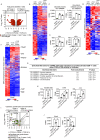
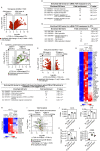
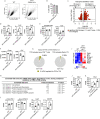
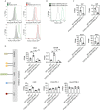
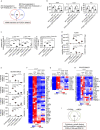
Similar articles
-
T-Cell-Specific Loss of the PI-3-Kinase p110α Catalytic Subunit Results in Enhanced Cytokine Production and Antitumor Response.Front Immunol. 2018 Feb 27;9:332. doi: 10.3389/fimmu.2018.00332. eCollection 2018. Front Immunol. 2018. PMID: 29535720 Free PMC article.
-
PI3Kδ Forms Distinct Multiprotein Complexes at the TCR Signalosome in Naïve and Differentiated CD4+ T Cells.Front Immunol. 2021 Mar 8;12:631271. doi: 10.3389/fimmu.2021.631271. eCollection 2021. Front Immunol. 2021. PMID: 33763075 Free PMC article.
-
PI3K p110δ inactivation antagonizes chronic lymphocytic leukemia and reverses T cell immune suppression.J Clin Invest. 2019 Jan 2;129(1):122-136. doi: 10.1172/JCI99386. Epub 2018 Nov 19. J Clin Invest. 2019. PMID: 30457982 Free PMC article.
-
Genetic Defects in Phosphoinositide 3-Kinase δ Influence CD8+ T Cell Survival, Differentiation, and Function.Front Immunol. 2018 Aug 2;9:1758. doi: 10.3389/fimmu.2018.01758. eCollection 2018. Front Immunol. 2018. PMID: 30116245 Free PMC article. Review.
-
Antigen receptor signalling: a distinctive role for the p110delta isoform of PI3K.Trends Immunol. 2007 Feb;28(2):80-7. doi: 10.1016/j.it.2006.12.007. Epub 2007 Jan 5. Trends Immunol. 2007. PMID: 17208518 Free PMC article. Review.
Cited by
-
Endogenous pAKT activity is associated with response to AKT inhibition alone and in combination with immune checkpoint inhibition in murine models of TNBC.Cancer Lett. 2024 Apr 1;586:216681. doi: 10.1016/j.canlet.2024.216681. Epub 2024 Feb 3. Cancer Lett. 2024. PMID: 38311054 Free PMC article.
-
Autophagy repression by antigen and cytokines shapes mitochondrial, migration and effector machinery in CD8 T cells.Nat Immunol. 2025 Mar;26(3):429-443. doi: 10.1038/s41590-025-02090-1. Epub 2025 Feb 27. Nat Immunol. 2025. PMID: 40016525 Free PMC article.
-
Protein synthesis, degradation, and energy metabolism in T cell immunity.Cell Mol Immunol. 2022 Mar;19(3):303-315. doi: 10.1038/s41423-021-00792-8. Epub 2022 Jan 4. Cell Mol Immunol. 2022. PMID: 34983947 Free PMC article. Review.
-
Staggered starts in the race to T cell activation.Trends Immunol. 2021 Nov;42(11):994-1008. doi: 10.1016/j.it.2021.09.004. Epub 2021 Oct 11. Trends Immunol. 2021. PMID: 34649777 Free PMC article. Review.
-
Beyond Anti-PD-1/PD-L1: Improving Immune Checkpoint Inhibitor Responses in Triple-Negative Breast Cancer.Cancers (Basel). 2024 Jun 11;16(12):2189. doi: 10.3390/cancers16122189. Cancers (Basel). 2024. PMID: 38927895 Free PMC article. Review.
References
-
- Garcon F, Patton DT, Emery JL, Hirsch E, Rottapel R, Sasaki T, et al. . CD28 Provides T-Cell Costimulation and Enhances PI3K Activity at the Immune Synapse Independently of Its Capacity to Interact With the p85/p110 Heterodimer. Blood (2008) 111(3):1464–71. 10.1182/blood-2007-08-108050 - DOI - PubMed
Publication types
MeSH terms
Substances
Grants and funding
LinkOut - more resources
Full Text Sources
Molecular Biology Databases
Research Materials
Miscellaneous

